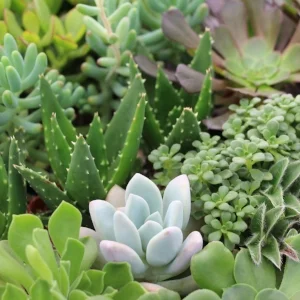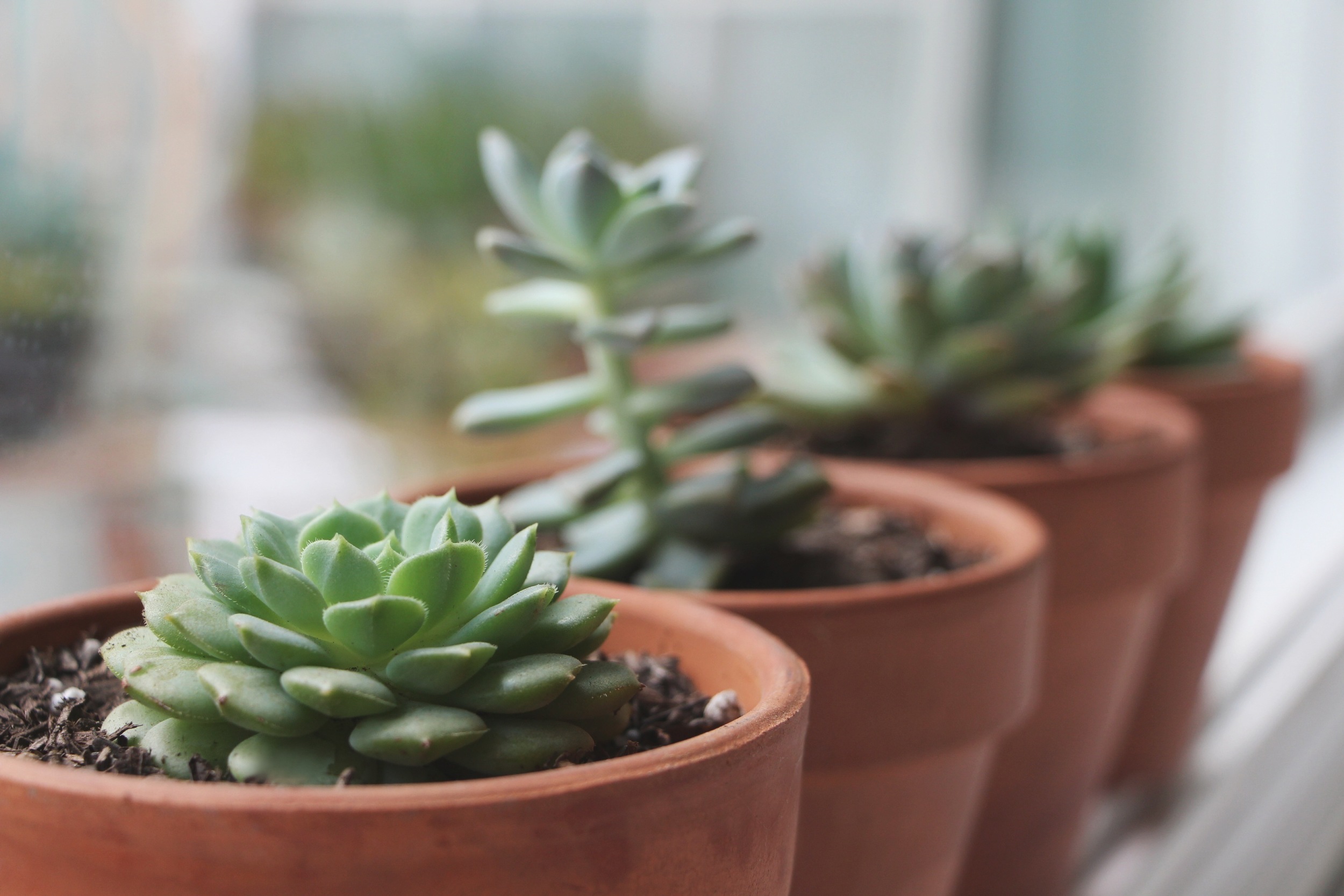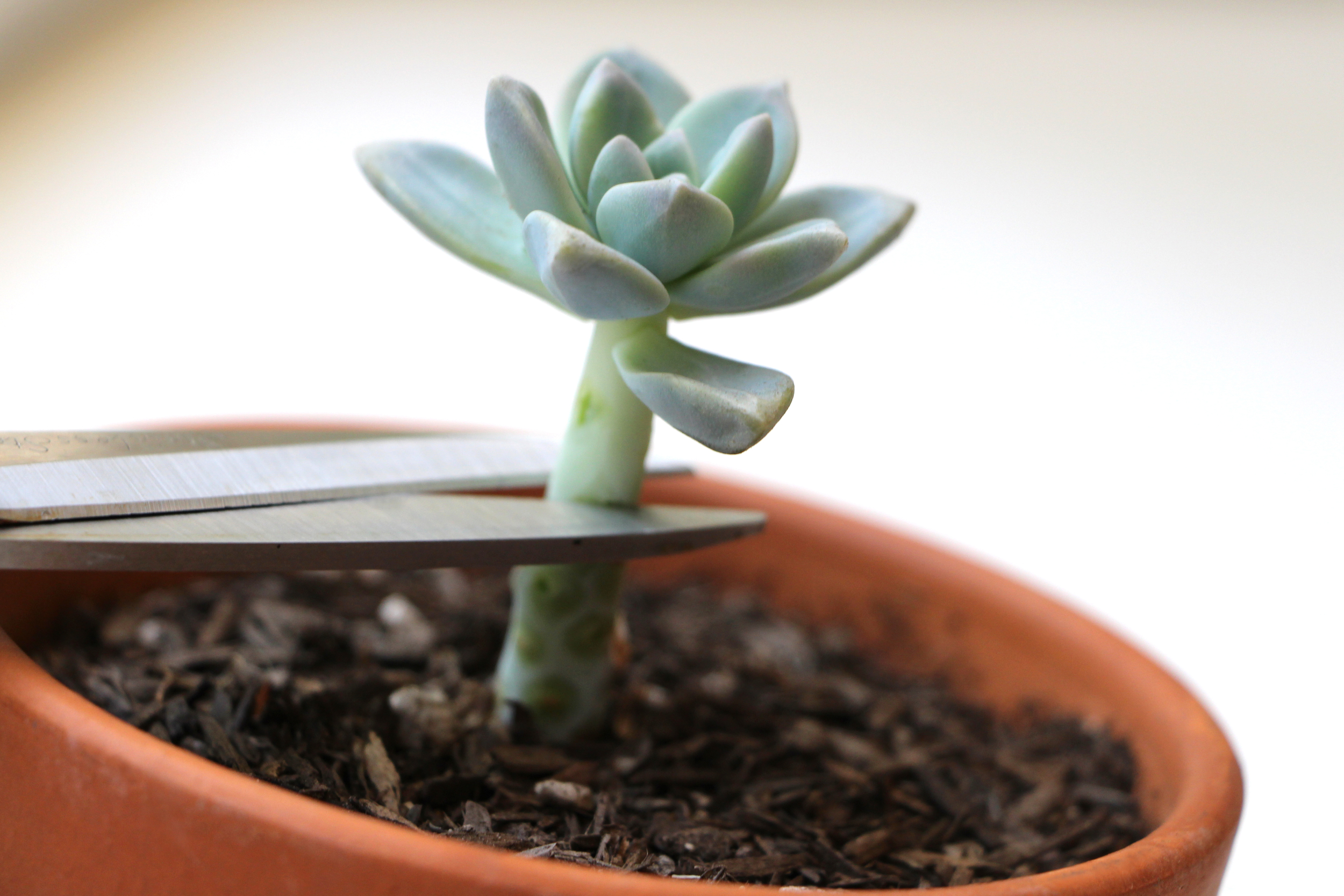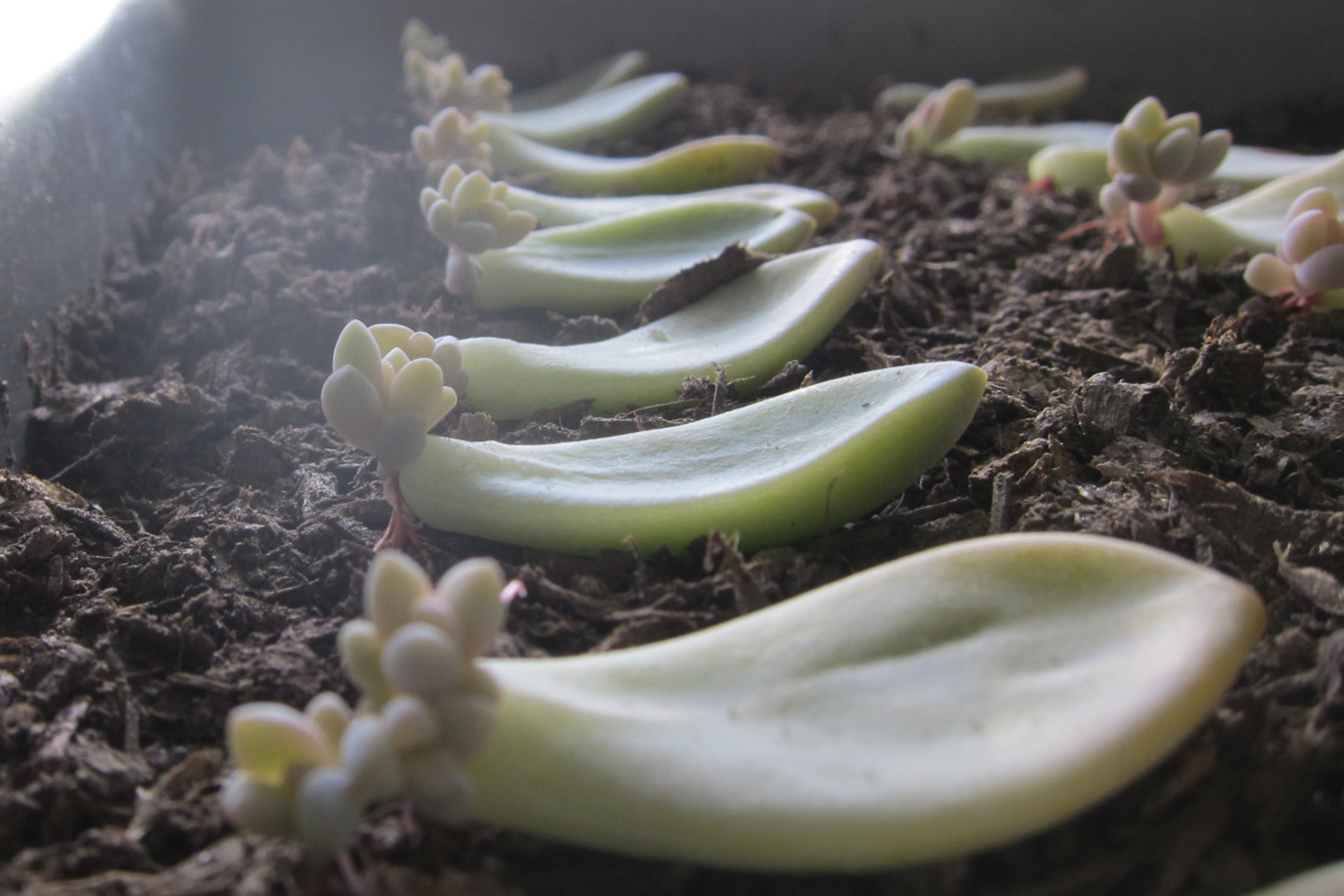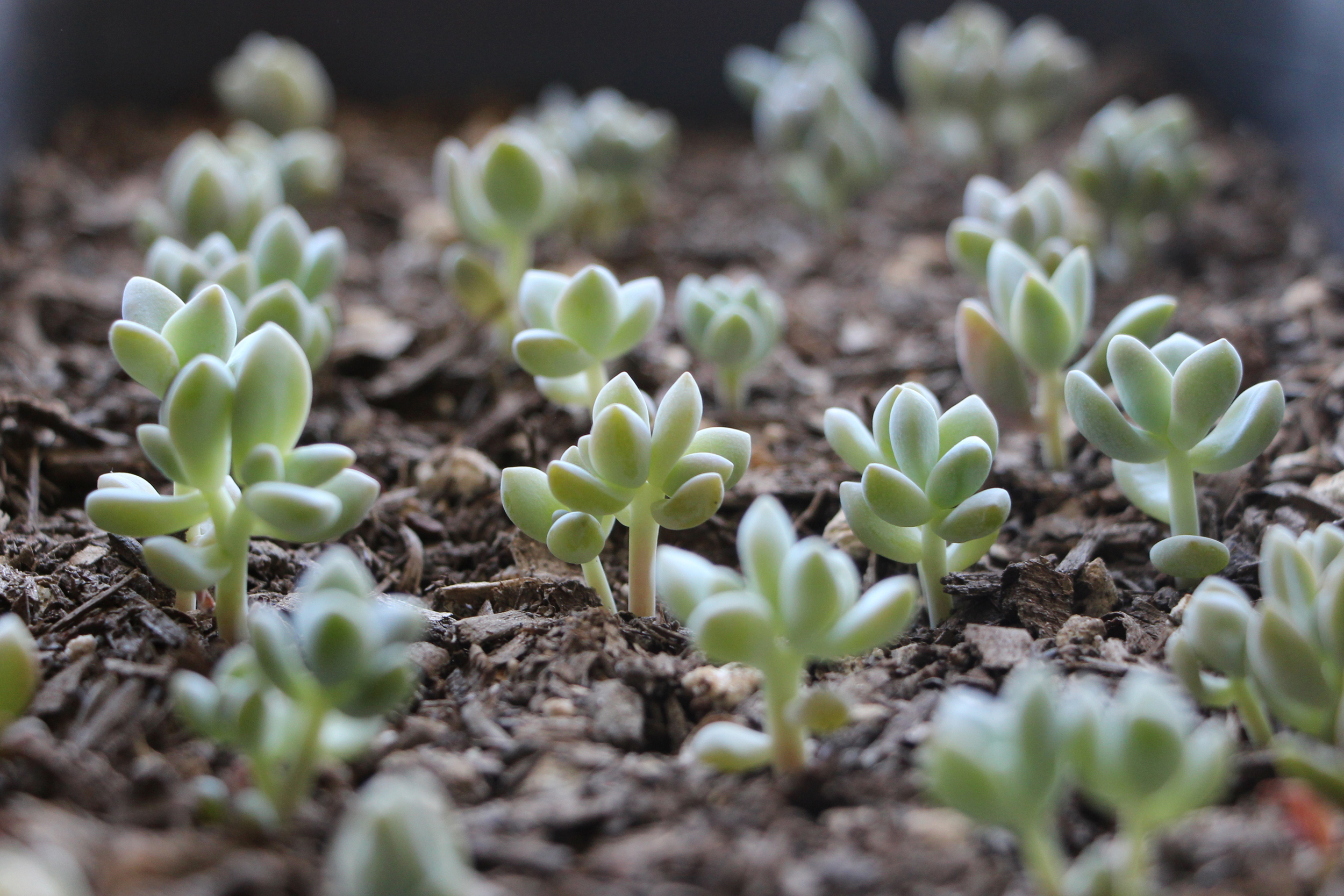How to Grow Succulents in Artificial Light
/Living in sunny Southern California, I don't have much experience with growing succulents in cold temperatures and dark winters. I'm lucky enough to be able to leave my plants outdoors year round with little or no damage from frost and low light. I realize that many of you live around the globe and are wondering what to do now that you've brought your plants inside for the winter. Maybe you have your plants in window sills, but they are still getting leggy, or maybe you just don't get any sunlight where you live during the winter months. Look no further! I'm so excited to have Ben Thorton, indoor plant growing expert, here with us today to share his knowledge on using grow lights to help nurture your beautiful garden no matter what your light conditions!
Author: Ben Thorton
Lately succulents have become one of the most popular house plants, because they look very pretty, add a nice vibe to your house and also don’t require as much care and water as other house plants do. Because succulents are warmth and sun loving plants, many are afraid to grow succulents in places where the summer season isn’t that long. You might be surprised to know you can still grow your succulents year round even if you live in a climate where there are distinct seasons and winter months are cold and dark. Just bring them inside once cooler temperatures hit and use artificial lights to give your succulents the light they need. If you are on the fence about using grow lights or are afraid that you might hurt your plants by using them, here is a quick guide to growing your succulents indoors and under artificial lights.
Artificial lights can be defined as lights that are either used in addition to natural sunlight or lights that are used to completely imitate sunlight in conditions where there is actually no sunlight available. For humans, artificial light cannot replace real sunlight, because we get vitamin D from sunlight which is one of the most essential vitamins in the human body. Plants are a little different, because the only thing they need from sunlight is the light itself. When plants receive light a process called photosynthesis happens and they get the energy they need to grow. As long as you provide the correct amount of light, you are able to grow plants including succulents under artificial light as good, if not better, than you would outdoors in real sunlight. However, you still need to choose the most suitable lights and know a few things about how to use them, to be successful at growing your succulents in your home.
When choosing artificial lighting for an indoor garden there are a couple of things that you need to think about when you are making the decision. And these things are:
- How bright and powerful is the light that the grow lights emit?
First and foremost you need to think about how bright the light that comes from grow lights will be, because this will determine how much light the plants get and how well they will be able to grow. For succulents, you need lights that will emit at least 2,000 lumens for each square foot of light. In direct sunlight at noon there are 10,000 lumens per square foot, but if you run 2,000 or more lumen bulbs for 14 or more hours a day, the plants will get approximately the same light exposure as they would in the heat of the summer.
- How many watts the light consumes?
Another thing you need to think about is what wattage the grow lights you buy have, because this will affect your electricity bill. The more watts a light consumes, the more you have to pay for your electricity, so you don’t want to buy a light that is bright, but chews up a lot of watts, as that will be very expensive. Look for lights that are labeled energy efficient, because they will most likely have high lumen count and low wattage, giving you the best of both worlds – bright light for your plants and small electricity consumption for you.
- In what color temperature is the light that comes from the grow lights?
Because succulents are sun loving plants, they prefer bright light over shadow which is why they also require a specific light in terms of the color temperature of the light. Color temperature is essentially the visible color that the grow lights radiate. This is measured in Kelvins. Plants need light that is in a specific range of color temperatures to be able to give the them the light they need to grow. The optimal color temperature for succulents starts at about 5,000 Kelvins which will give your succulents cool and full spectrum light that closely resembles sunlight.
- How much heat does the light radiate?
Lastly, it is very important to know how much heat the grow lights radiate. If they give off a lot of heat, then you could have a problem with the room where you grow your succulents being too hot, which will result in you having to spend more money on a good ventilation or cooling system. On top of that, if lights emit a lot of heat, you will also have to place your plants further from the lights, so they don’t get burned. This can result in your plants not getting enough light. There are some common grow lights that are known to have high heat emission and some that are cool to touch even after they have been on for 24 hours. Before purchasing a grow light check to make sure it doesn’t produce too much heat.
My recommendation: As I have worked with many different grow lights, I would recommend you to buy T5 grow lights because these tube shaped fluorescent lights that are 5 eights of an inch in diameter, have all the characteristics of a good grow light. You are able to purchase T5 grow lights in multiple configurations starting from two different lengths (2 ft and 4 ft bulbs) to many different bulb counts (from 1 to 12 bulbs in one fixture), different efficiency types (Normal Output (NO), High Output (HO) and Very High Output (VHO)) and different color temperature varieties (from only 2,900 Kelvins up to 10,000 Kelvins). I usually use High output (HO) bulbs, because one 2 foot HO T5 bulb will consume only 24 watts but will give out 2,000 lumens where as one 4 foot long high output T5 bulb will consume 54 watts but will give out 5,000 lumens worth of light. If you combine one or the other length bulbs in a group of 2 or more bulbs and chose bulbs that are in the color temperature of 6,500 Kelvins, you get really efficient light that is perfect for succulents.
Although choosing the right artificial light is big part of successfully growing your plants in an indoors garden, you also need to know a few more things that will help you do even better at growing plants inside.
- Know how high you need to hang the grow lights from your plant canopies
A crucial piece of knowledge is to know how high to hang your grow lights, because it determines how much light the plants get. Whether you choose T5 fixtures or you decide on different grow lights, you need to hang them up so that they are able to give the plants the maximum amount of light without burning the plants with the heat that radiates from these lights. I would recommend to first put any grow light at least 6 to 8 inches away from the tops of your succulents, because this will lessen the chance of your grow lights burning and damaging your plants. Later, if you find that your lighting doesn’t give out heat and is cool to touch (like T5 grow lights), you can place them closer to the succulents so they get more intense light.
- Figure out the light cycles
A specificity of indoor plant growing with grow lights is that you need to figure out what the light cycle for the plants will be, as there won’t be sun that dictates when plants get the light. Light cycles are used to simulate the conditions of day and night for indoor gardens and you need to know your light cycles to grow your succulents faster. A general rule of thumb for growing any plants under lights is that the more light you give them, the faster they will grow and the same can be attributed to succulents. If you are overwintering the plants, then I would put the succulents at first on 20/4 light cycle meaning that I would leave the lights on for 20 hours a day and then turn them off for 4 hours and slowly increase the darkness period so the light cycle is 16/8 (light/dark). Succulents need to know when it is winter, so they can start their dormant process. If you use grow lights all year around for your succulents, during the summer you can have them on 24/0 or 20/4 light cycle for them to grow quickly and thrive.
- Know how often to water your succulents
And lastly, watering too is a very important thing, because under watering and also overwatering your plants will damage them. During the summer, even if you are imitating summer with grow lights, you need to water the succulents normally, meaning that you water them once the soil is dry. It is a different story during the winter, even if succulents are grown indoors. During the winter or imitated winter, succulents are dormant, so they need much less water, because they are either growing very slowly or not growing at all. So how often to water succulents in the winter then? Generally, I would recommend to water them about every 2 weeks, but you will need to water them more often if the room you are growing them in is hot, because the heat will dry them out quicker. If you are not sure how often your succulents need water during the winter period, just look at the soil in which succulents are growing. In winter, let the soil dry out and then wait about one week during which succulents will absorb the water and only then will you want to water them, so they are not overwatered.
Hope this guide to growing succulents indoors and under artificial lights will help you to grow and maintain your plants even during the coldest of winters. If you want to find out more information about growing plants indoors, T5 lights or maybe to just ask me additional questions, you can visit my website T5Fixtures, where I share my experience of how to grow plants indoors more successfully.
Added January 2017:
For more information on growing succulents in artificial light, check out this article on Epic Gardening called T5 Grow Lights Guide for 2017!
Related



